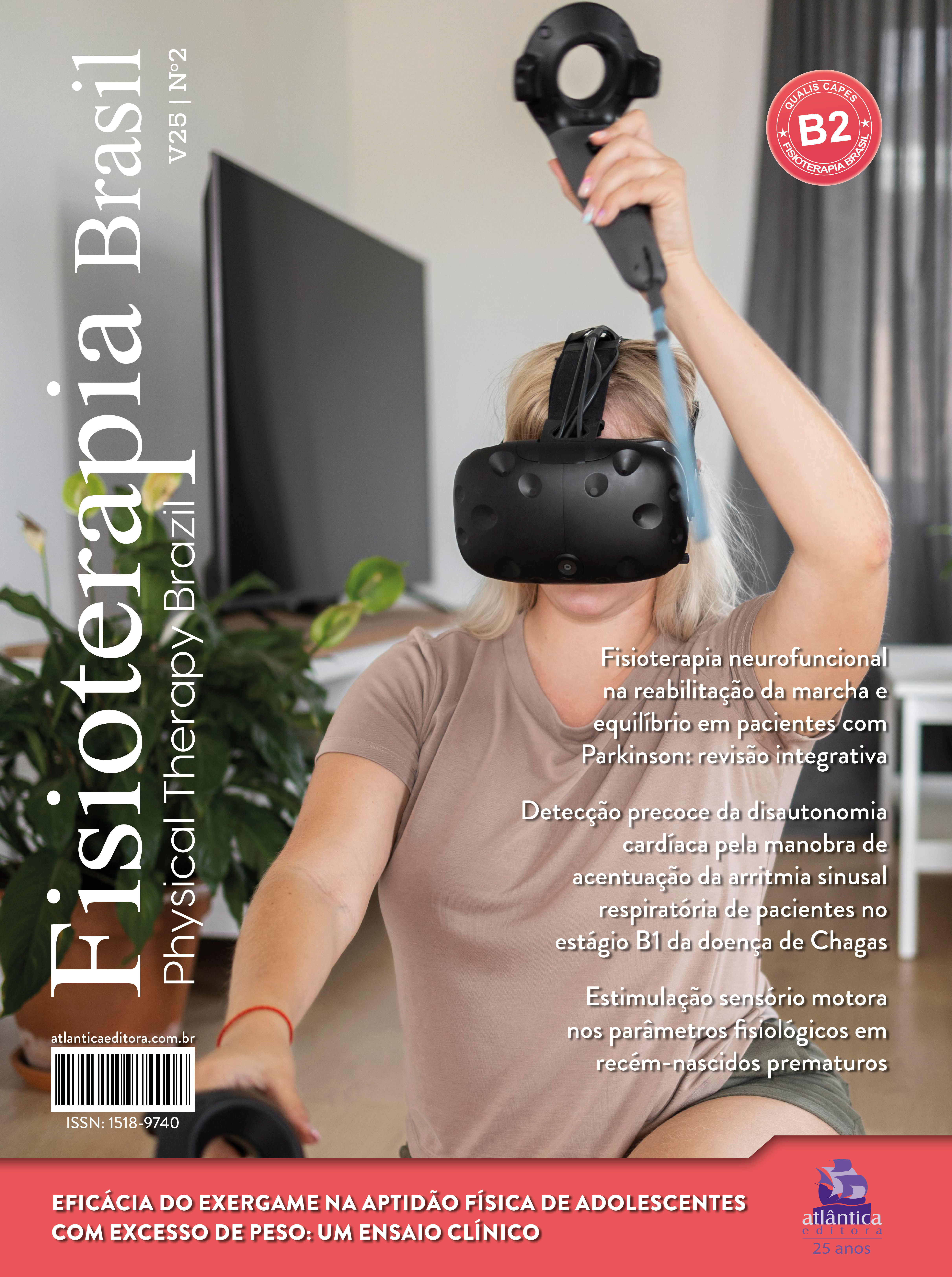Effects of blood flow restriction training in patients with knee osteoarthritis: systematic review
DOI:
https://doi.org/10.62827/fb.v25i2.5f41Keywords:
Knee osteoarthritis; blood flow restriction training; rehabilitation; exercise.Abstract
Objective: We investigated the impacts of training with blood flow restriction (BFR-TR) in patients diagnosed with knee osteoarthritis (KOA). Methods: The systematic review was conducted from January to August 2023, using the PubMED, PEDro, Web of Science and Scielo databases. It was decided to prioritize these databases due to their preponderant scientific relevance. Among the 297 initial references, 05 studies were carefully included after a detailed evaluation. Results: The results indicate that BFR-TR demonstrated the potential to alleviate pain and improve physical functionality. However, there was no significant impact on perceived quality of life. The methodological quality of the studies varied, highlighting excellence in specific research. It was observed that the duration of the protocol plays a relevant role in the results, especially with regard to increasing muscle strength. Among the limitations, it is worth highlighting the scarcity of clinical trials and the disparities in the measurement of partial occlusion pressure (POV). Conclusion: Although Blood Flow Restriction Training shows promising efficacy as a therapy for KOA, there is a pressing need to conduct more research to strengthen the evidence base and fully understand the interconnection between vascular occlusion and the clinical condition in question. This study provides a solid foundation, but the complexity of knee osteoarthritis demands continued investigation to guide effective and informed therapeutic approaches.
References
Imoto AM, Pardo JP, Brosseau L, Taki J, Desjardins B, Thevenot O, et al. Evidence synthesis of types and intensity of therapeutic land-based exercises to reduce pain in individuals with knee osteoarthritis. Rheumatology International. 2019 Mar 26;39(7):1159–79
Bryk FF, dos Reis AC, Fingerhut D, Araujo T, Schutzer M, Cury R de PL, et al. Exercises with partial vascular occlusion in patients with knee osteoarthritis: a randomized clinical trial. Knee Surgery, Sports Traumatology, Arthroscopy. 2016 Mar 12;24(5):1580–6.3
American College of Sports Medicine. Progression Models in Resistance Training for Healthy Adults. Medicine & Science in Sports & Exercise. 2009 Mar;41(3):687–708.4
Pitsillides A, Stasinopoulos D, Mamais I. Blood Flow Restriction Training in Patients with Knee Osteoarthritis: Systematic Review of Randomized Controlled Trials. Journal of Bodywork and Movement Therapies. 2021 Apr;27(477-486).5
Santos CM da C, Pimenta CA de M, Nobre MRC. The PICO strategy for the research question construction and evidence search. Revista Latino-Americana de Enfermagem. 2007 Jun;15(3):508–11.6
Pedrosa A, Silva V, Antônio José Grande. Avaliação do risco de viés de ensaios clínicos randomizados pela ferramenta da colaboração Cochrane. Diagn tratamento. 2013 Jan 1;18(38-44)
Ferraz RB, Gualano B, Rodrigues R, Kurimori CO, Fuller R, Lima FR, et al. Benefits of Resistance Training with Blood Flow Restriction in Knee Osteoarthritis. Medicine & Science in Sports & Exercise. 2018 May;50(5):897–905
Segal NA, Williams GN, Davis MC, Wallace RB, Mikesky AE. Efficacy of Blood Flow-Restricted, Low-Load Resistance Training in Women with Risk Factors for Symptomatic Knee Osteoarthritis. PM&R. 2014 Oct 5;7(4):376–84
Mahmoud WS, Osailan A, Ahmed AS, Elnaggar RK, Radwan NL. Optimal parameters of blood flow restriction and resistance training on quadriceps strength and cross-sectional area and pain in knee osteoarthritis. Isokinetics and Exercise Science. 2021 Mar 18;29(3):1–10
Teo PL, Hinman RS, Egerton T, Dziedzic KS, Bennell KL. Identifying and Prioritizing Clinical Guideline Recommendations Most Relevant to Physical Therapy Practice for Hip and/or Knee Osteoarthritis. Journal of Orthopaedic & Sports Physical Therapy. 2019 Jul;49(7):501–12
Cerqueira MS, de Brito Vieira WH. Effects of blood flow restriction exercise with very low load and low volume in patients with knee osteoarthritis: protocol for a randomized trial. Trials. 2019 Feb 18;20(1)
Jardim RAC, de Sousa TS, dos Santos WNN, Matos AP, Iosimuta NCR. Blood flow restriction with different load levels in patients with knee osteoarthritis: protocol of a randomized controlled trial. Trials. 2022 Jan 15;23(1)
Wang HN, Chen Y, Cheng L, Wang ST, Hu DX, Wang LN, et al. Effect of low-load resistance training with different degrees of blood flow restriction in patients with knee osteoarthritis: study protocol for a randomized trial. Trials. 2022 Jan 3;23(1)
Downloads
Published
Issue
Section
License
Copyright (c) 2024 Manoel Campos de Carvalho Neto , Ana Júlia dos Santos Monteiro , Hermenson Gabriel Spindola Barreto , Ian Souza Brandão, Joelnelinton Dias Miranda do Nascimento , Leonardo dos Reis França, Maria Clara Siqueira Torres Borges , Samara Sousa Vasconcelos Gouveia (Autor)

This work is licensed under a Creative Commons Attribution 4.0 International License.
Autores que publicam nesta revista concordam com os seguintes termos:
Autores mantém os direitos autorais e concedem à revista o direito de primeira publicação, com o trabalho simultaneamente licenciado sob a Licença Creative Commons Attribution 4.0 que permite o compartilhamento do trabalho com reconhecimento da autoria e publicação inicial nesta revista.
Autores têm autorização para distribuição não-exclusiva da versão do trabalho publicada nesta revista (ex.: publicar em repositório institucional ou como capítulo de livro), com reconhecimento de autoria e publicação inicial nesta revista.


